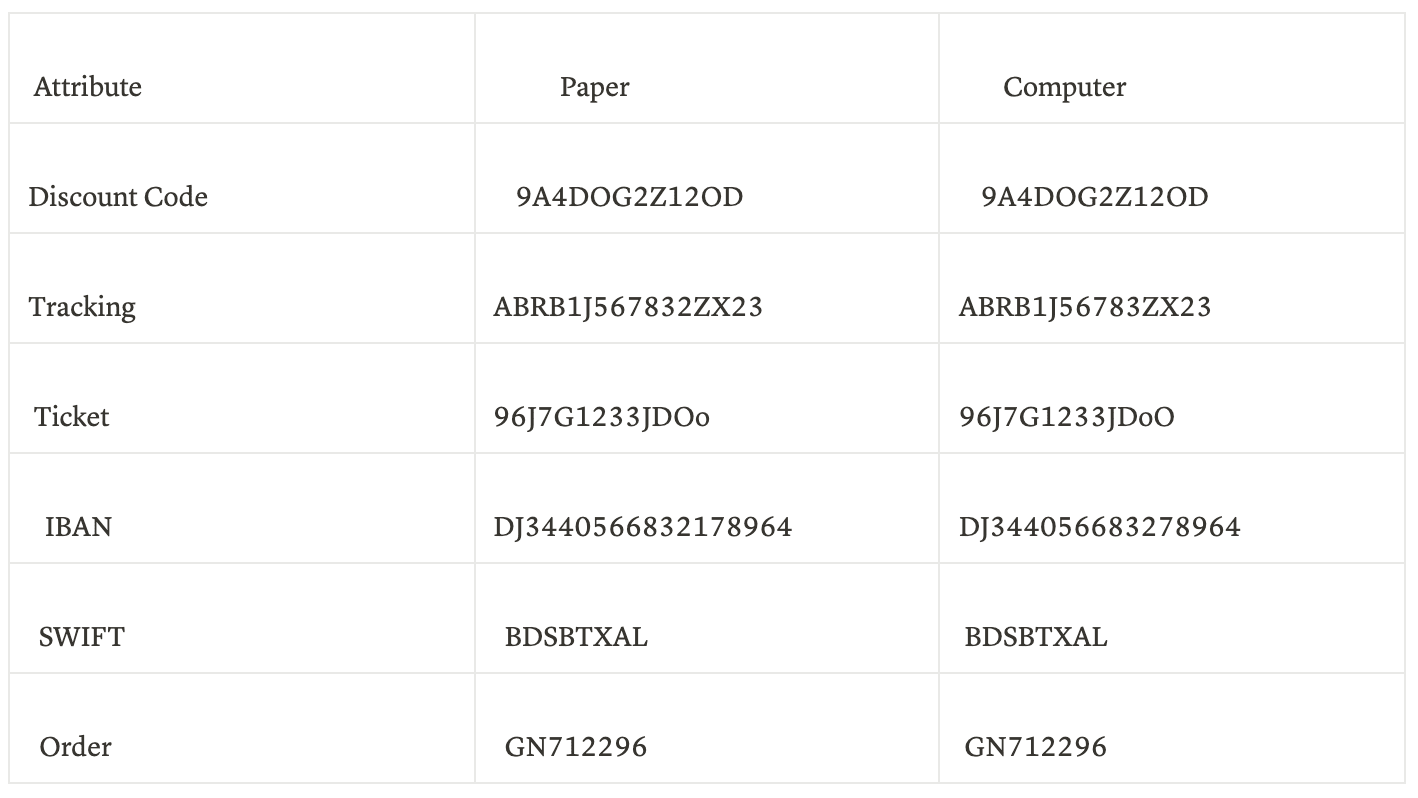Grammar: Grammar refers to the rules and principles governing the structure and usage of a language. It is essential to measure grammar skills in this test to ensure candidates have a solid foundation in writing coherent and grammatically correct copy.
Vocabulary: Vocabulary encompasses the words and phrases a person knows and uses in their writing. Evaluating vocabulary skills helps gauge a candidate's ability to effectively convey ideas, choose appropriate language, and engage readers.
Attention to detail: Attention to detail is the ability to carefully review and spot errors or inconsistencies in copy. This skill is crucial in copywriting as it ensures accuracy, maintains brand credibility, and delivers high-quality content.
Punctuation: Punctuation involves the correct use of marks such as commas, periods, and quotation marks to enhance clarity, organization, and meaning in written communication. Measuring punctuation skills is important as it demonstrates a candidate's proficiency in crafting clear and precise copy.
Verbal reasoning: Verbal reasoning comprises the ability to understand, evaluate, and draw conclusions from written information. Assessing verbal reasoning skills helps determine a candidate's comprehension abilities, critical thinking, and logical analysis when crafting persuasive and compelling copy.
English proficiency: English proficiency measures a candidate's overall command and proficiency in the English language, including grammar, vocabulary, reading, writing, and speaking. Evaluating English proficiency is essential in ensuring candidates can consistently produce high-quality and accurate copy in English.
Headline Writing: Headline writing focuses on constructing attention-grabbing and concise titles that entice readers to engage with the content. Evaluating headline writing skills allows recruiters to gauge a candidate's ability to craft compelling and click-worthy headings.
Subheading Creation: Subheading creation is the skill of crafting informative and subheadings that enhance content structure and readability. Measuring subheading creation skills helps assess a candidate's ability to organize ideas, create hierarchy, and guide readers through the copy.
Audience Understanding and Targeting: Audience understanding and targeting involves comprehending the characteristics, preferences, and needs of a target audience to tailor copy accordingly. Evaluating this skill ensures candidates can effectively connect with the intended audience and achieve the desired response.
SEO Writing: SEO writing refers to the practice of optimizing written content to rank higher in search engine results pages. Assessing SEO writing skills is crucial in copywriting as it ensures candidates can create copy that is both user-friendly and search engine-friendly, improving visibility and reach.
Call to Action (CTA) Creation: Call to action (CTA) creation focuses on crafting persuasive statements that prompt readers to take a desired action. Measuring CTA creation skills helps recruiters assess a candidate's ability to motivate and engage readers to perform specific actions, such as making a purchase, signing up, or contacting a business.
Social Media Copy Writing: Social media copywriting involves creating engaging and compelling content tailored for social media platforms. Evaluating social media copywriting skills helps assess a candidate's ability to grab attention, drive engagement, and convey messages effectively within the unique constraints and characteristics of social media.
Editing and Proofreading: Editing and proofreading are the skills of meticulously reviewing and correcting errors, inconsistencies, and improving the overall quality of written content. Measuring editing and proofreading skills is vital in copywriting to ensure the delivery of polished and error-free copy.
Writing for Different Formats and Mediums: Writing for different formats and mediums refers to the ability to adapt writing style, tone, and structure to suit various platforms, such as websites, blogs, emails, or print materials. Evaluating this skill ensures candidates can effectively communicate in diverse media and adjust their writing to match the requirements of each format.
Understanding Brand Voice and Tone: Understanding brand voice and tone involves grasping the unique personality, values, and communication style of a brand. Assessing this skill helps determine a candidate's ability to align their writing with the brand's identity, maintain consistency, and effectively convey the brand's message.
Writing for Accessibility: Writing for accessibility focuses on creating content that is easily understandable and usable by individuals with disabilities. Evaluating this skill ensures candidates can produce inclusive and accessible copy, considering factors such as readability, clear language, and appropriate formatting.
Writing for Different Stages of the Customer Journey: Writing for different stages of the customer journey involves tailoring content to match the specific needs and motivations of customers at different stages, such as awareness, consideration, and purchase. Assessing this skill helps recruiters gauge a candidate's ability to shape copy that resonates with prospects and converts them into customers.
Writing with Empathy: Writing with empathy entails considering and understanding the emotions, perspectives, and experiences of the target audience when crafting copy. Evaluating this skill helps ensure candidates can create engaging and relatable content that connects with readers on a deeper level.
A/B Testing for Copy: A/B testing for copy involves conducting experiments and comparing different versions of copy to identify the most effective option. Assessing A/B testing skills allows recruiters to determine a candidate's ability to analyze data, optimize copy performance, and make data-driven decisions.
Measuring and Analyzing Copy Performance: Measuring and analyzing copy performance involves evaluating the effectiveness, impact, and success of written content. Evaluating this skill helps recruiters assess a candidate's ability to use analytics tools, gather data, interpret results, and make improvements based on insights gained.

























































